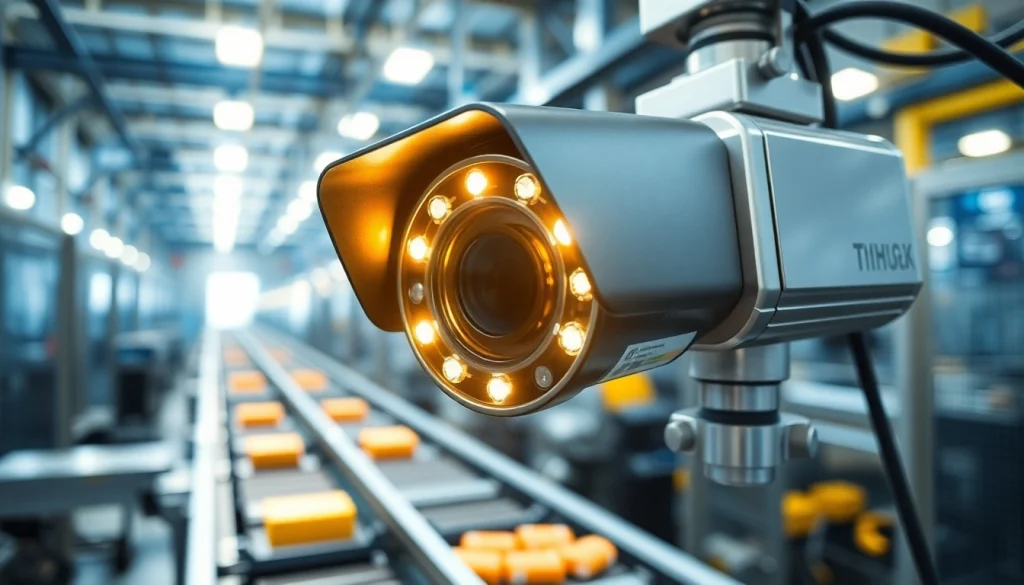What is Machine Vision?
Definition and Key Concepts
Machine vision is a field that integrates computer science, optics, and artificial intelligence to enable machines to interpret and act upon visual information. By utilizing sophisticated algorithms, cameras, and sensors, machine vision technology interprets images for various industrial applications, creating outcomes that significantly enhance operational efficiency. Simply put, machine vision allows industrial equipment to ‘see,’ making decisions based on what it observes, similar to human vision but at a higher speed and accuracy.
How Machine Vision Works
The core of machine vision technology comprises three main components: image acquisition, image processing, and image analysis. Initially, light illuminates an object, and a camera captures the reflected light, converting it into digital signals. These signals undergo processing through algorithms designed to detect specific features such as shapes, colors, and sizes. The final stage involves analysis, where the processed information helps in making real-time decisions for inspection, identification, and sorting tasks.
Importance in Modern Industry
In today’s competitive market, understanding and implementing machine vision systems can differentiate successful organizations from those that lag behind. Machine vision plays a crucial role in quality control, ensuring products meet stringent requirements while reducing human error. Its capability to monitor production processes continuously translates to less downtime, improved quality of goods, and increased speed of operations, all of which contribute to higher profitability.
Applications of Machine Vision
Quality Control and Inspection
One of the primary applications of machine vision is in quality control and inspection. Inspections that were traditionally manual can now be automated through machine vision systems that offer greater accuracy and efficiency. For instance, in the food industry, machine vision can scan products on production lines for defects, detecting items that fall outside specified tolerances, thus preventing substandard goods from reaching consumers.
Automation in Manufacturing
Machine vision facilitates the automation of repetitive tasks, which significantly reduces labor costs and increases throughput. In manufacturing settings, this technology can assist in guiding robotic arms to pick and place components accurately or to assemble products with precision. For example, in electronics manufacturing, machine vision systems can ensure that components are placed correctly on circuit boards, thus minimizing defects and wastage.
Robotics and Machine Interaction
Machine vision technologies enhance the interaction between robots and their environments. By providing robots with the capability to see and interpret surroundings, they can navigate autonomously, adapt to changes in their environment, and perform complex tasks. An example includes autonomous vehicles that utilize machine vision for object detection, obstacle avoidance, and safe navigation.
Machine Vision vs. Computer Vision
Understanding the Differences
While often used interchangeably, machine vision and computer vision represent different facets of visual interpretation technology. Machine vision typically refers to specific applications aimed at automating visual inspection and analysis processes in industrial environments. In contrast, computer vision encompasses a broader range of technologies that enable machines to interpret and understand the visual world through a wider lens, including applications in fields like augmented reality and facial recognition.
Use Cases for Each Technology
Machine vision is frequently applied in manufacturing and quality control, such as detecting product defects or verifying assembly correctness. Meanwhile, computer vision finds application in sectors such as healthcare, where it helps in diagnosing medical images, or in retail, where it analyzes customer behaviors and preferences. Both domains leverage image processing, but their end goals and contexts often differ.
Industry Implications
The distinction between machine vision and computer vision matters significantly from an industry perspective. Businesses must align their technological investments with their strategic objectives. Companies focusing on operational efficiency and quality control may invest more in machine vision systems, whereas those looking to enhance user experiences or develop innovative applications may pursue computer vision technologies.
Challenges Facing Machine Vision Systems
Technical Limitations
Despite advancements, machine vision systems face several technical limitations, including the need for high-quality lighting conditions and camera resolution. Poor lighting can significantly affect image quality, leading to misinterpretations. Additionally, variations in product appearance can undermine the reliability of system algorithms, highlighting the need for continuous training and upgrades of machine vision systems.
Cost Considerations
Implementing a robust machine vision system often involves significant upfront investment. The costs associated with hardware, software, and system integration can be a barrier for smaller firms. However, the long-term savings gained through increased efficiency and reduced defect rates can offset these initial expenditures.
Integration with Existing Systems
Integrating machine vision solutions into existing manufacturing processes can be challenging. Companies may encounter compatibility issues between new technologies and legacy systems. Moreover, ensuring that team members are adequately trained to operate and maintain these systems is essential for successful integration and operation.
Future Trends in Machine Vision
Advancements in AI and Deep Learning
As artificial intelligence and machine learning technologies continue to evolve, so too does the potential for machine vision systems. The integration of deep learning enables these systems to improve their accuracy over time, learning from past mistakes and adapting to new conditions. This advancement leads to smarter machines capable of more complex tasks without extensive human intervention.
The Role of Big Data
Machine vision systems generate substantial amounts of data from visual processing activities. As businesses increasingly adopt big data analytics, the insights drawn from machine vision data can drive smarter decision-making in operations. This synergy between machine vision and big data analytics can create a comprehensive view of production processes, enhancing quality control and operational efficiency.
Emerging Market Opportunities
The landscape of machine vision is rapidly evolving, revealing numerous opportunities for businesses across diverse sectors. Emerging applications in areas such as agriculture, where machine vision assists with precision farming, or healthcare, in diagnostics and imaging, suggest robust growth potential. As technology continues to advance, the scope and capabilities of machine vision are likely to expand, leading to innovative business solutions.
